1. SoBe Beverages
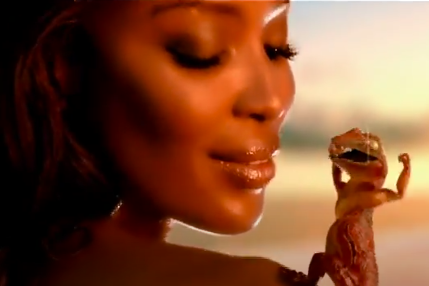
SoBe (South Beach Beverage Company) was a major player in the early 2000s, known for its fruit-flavored energy drinks, teas, and enhanced water beverages, according to History Oasis. Its branding heavily featured two quirky and cool lizards, which symbolized a relaxed, tropical lifestyle. The lizards appeared on the bottle caps, labels, and advertisements, giving the drinks a distinct and playful personality. The brand positioned itself as a hip, alternative choice to mainstream sodas, appealing to young adults who wanted a drink with an edge.
Though SoBe drinks were once widely available and had a strong cult following, they began to fade from prominence after PepsiCo acquired the brand in 2000. Over time, the unique flavors and lizard mascots disappeared from shelves, leaving only a few remaining products under the SoBe name. The lizards, which once symbolized carefree energy and relaxation, are now just a memory of a time when drinks were marketed with bold, unusual branding. Fans of SoBe still reminisce about its quirky aesthetic and creative flavors, but the brand’s former glory, along with its lizard mascots, is long gone from mainstream beverage culture.
2. Fruitopia
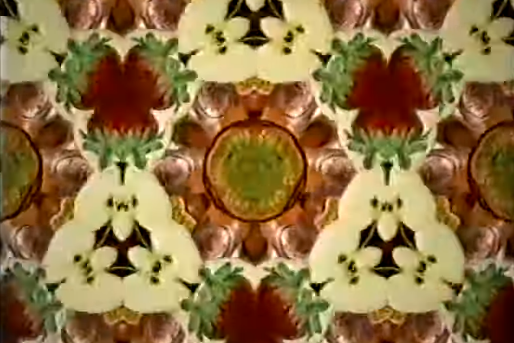
Fruitopia was a colorful and psychedelic fruit-flavored beverage introduced by Coca-Cola in the 1990s as a response to the rising popularity of Snapple. While it didn’t have a single animal mascot, it featured animated fruit creatures—some of which resembled animals like frogs and birds—in its surreal, trippy commercials. The brand was marketed as a drink for free spirits and creative thinkers, using artistic, almost dreamlike advertisements filled with swirling colors and abstract imagery.
Despite its early success, Fruitopia struggled to maintain its foothold in the competitive beverage market, according to the Los Angeles Times. By the early 2000s, Coca-Cola began phasing it out, replacing it with more mainstream fruit drinks under other brand names. The whimsical fruit-animal hybrids that once graced television screens vanished along with the brand, leaving only nostalgic memories for those who grew up drinking Fruitopia. Though some flavors were folded into other Coca-Cola product lines, the original magic of Fruitopia and its oddball animated creatures is long gone.
3. OK Soda
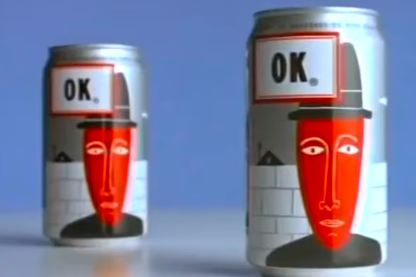
OK soda was one of Coca-Cola’s strangest marketing experiments in the 1990s, aimed at disaffected Generation X youth, according to Mental Floss. The drink itself was a citrusy soda with a somewhat bitter aftertaste, but what really set it apart was its absurdist advertising campaign. Among its surreal mascots was an odd-looking fish that appeared in some of its comic-style artwork, reinforcing the brand’s bizarre and ironic aesthetic. OK Soda was meant to be an anti-brand, appealing to those who rejected corporate messaging—ironically, it became a cult favorite among certain circles for this very reason.
Despite its uniquely odd marketing, OK Soda never caught on with the mainstream, and Coca-Cola discontinued it after just two years. The strange fish mascot, along with the brand’s cryptic advertising and minimalistic gray cans, disappeared entirely. Today, OK Soda is mostly remembered as a failed experiment in marketing, and its animal mascot remains one of the more obscure figures in beverage history.
4. Tang
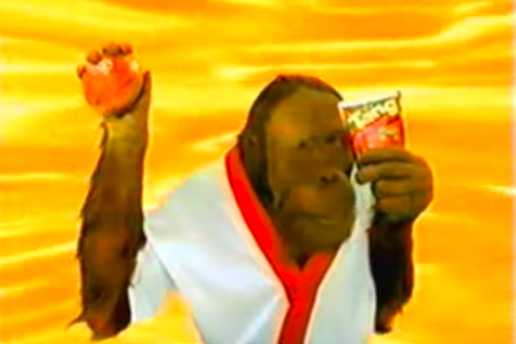
Tang, the powdered orange drink famously associated with NASA astronauts, once had an animated orangutan mascot that made it an even bigger hit with kids. According to Wikiwand, the Tang Orangutan, featured in commercials during the 1980s and 1990s, was full of energy and excitement, reinforcing the drink’s image as a fun and adventurous beverage. The character encouraged kids to mix up a glass of the vitamin-packed drink, often appearing in zany, action-packed ads.
While Tang itself still exists, the branding has shifted significantly, and the orangutan has been completely phased out. As marketing trends moved away from cartoon mascots, Tang’s advertising focused more on the drink’s connection to space history and nutritional benefits. The once-lively orangutan, a staple of ‘90s kids’ television, has faded into obscurity, leaving longtime fans nostalgic for the days when an energetic primate convinced them to drink their daily dose of powdered orange juice.
5. Ecto Cooler
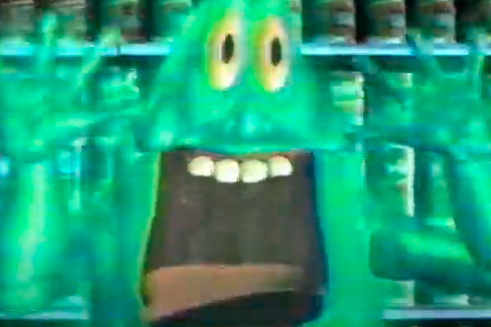
Hi-C’s Ecto Cooler was a neon-green citrus-flavored drink that became a massive hit in the late 1980s and 1990s, thanks to its connection to Ghostbusters. The drink’s mascot was Slimer, the gooey green ghost from the Ghostbusters animated series, who was prominently featured on the packaging and advertisements. The marketing played up the fun, messy appeal of Slimer, making Ecto Cooler a must-have drink for kids who loved the supernatural comedy franchise.
Despite its popularity, Ecto Cooler was discontinued in the early 2000s as the Ghostbusters franchise cooled off, according to Dinosaurdracula. Though it has made occasional limited-edition comebacks, including for the Ghostbusters movie reboots, it has never returned as a permanent product. Fans still hold onto nostalgic memories of the bright green drink and its mischievous mascot, but Slimer’s time as a beverage icon has long since passed.
6. Kool-Aid
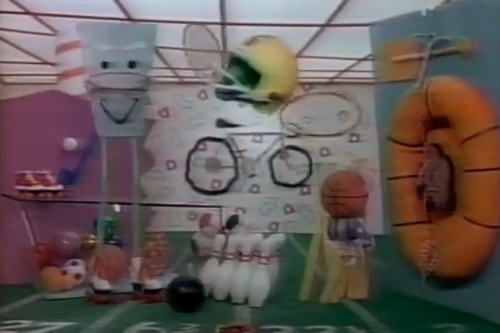
Kool-Aid is still around, but one of its most nostalgic campaigns featured a lineup of cartoon animal mascots promoting the Wacky Warehouse rewards program. In the 1990s, kids could collect points from Kool-Aid packets and redeem them for prizes, often featuring quirky animal characters like a skateboarding dog or a wacky bird. These characters were never as iconic as the Kool-Aid Man, but they played a big role in making Kool-Aid feel like a fun and exciting brand for kids.
As the Wacky Warehouse program faded and Kool-Aid’s marketing shifted, these animal mascots disappeared completely. Today, they remain a forgotten part of Kool-Aid’s history, remembered only by those who participated in the brand’s prize-collecting craze. While the Kool-Aid Man still smashes through walls in commercials, the fun-loving animal mascots that once helped define the brand are long gone.
7. Sunkist Soda
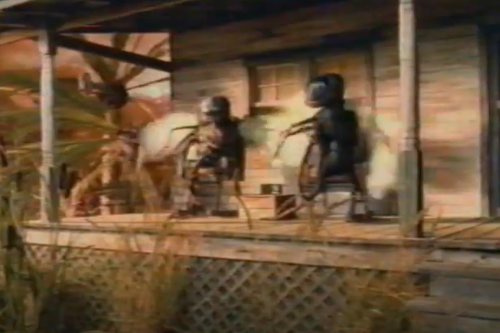
Sunkist, the popular orange soda brand, once had an animated mascot named Sunkist Sam the Seal, who was featured in commercials in the 1980s and early 1990s. Sunkist Sam was a fun-loving, sunglasses-wearing seal who embodied the beachy, laid-back vibe associated with the brand. He would often be seen surfing on waves of orange soda or lounging on the beach, reinforcing Sunkist’s image as the ultimate thirst-quencher for summer days.
Despite his popularity, Sunkist Sam gradually disappeared from marketing as the company modernized its branding. By the mid-1990s, the focus shifted to more straightforward advertising, and the cool seal was phased out completely. Today, Sunkist remains a favorite citrus soda, but Sam the Seal is just a nostalgic memory for those who grew up in the era of fun, animated mascots.
8. The Budweiser
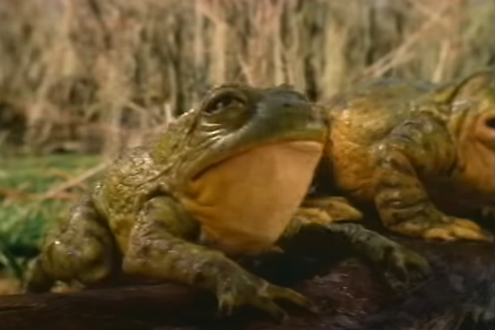
The Budweiser Frogs, introduced in the mid-1990s, quickly became one of the most memorable and innovative marketing campaigns in beer advertising history. The frogs were a simple yet highly effective concept: three animated frogs, each sitting in their own little pond, croaking the words “Bud,” “Weis,” and “Er.” This catchy, almost primal chant became an instant hit, with the frogs’ slow, croaky delivery adding to the charm. The simplicity of the concept, paired with the iconic Budweiser brand, made the frogs unforgettable. Their unique and humorous approach to advertising helped the Budweiser brand stand out during a time when beer commercials were becoming more competitive and creative. The Budweiser Frogs captured the attention of a broad audience, transcending age and interests, and quickly became pop culture icons.
The success of the Budweiser Frogs was undeniable. They became so popular that they appeared in multiple television commercials, merchandise, and even made guest appearances at major events. Their simple, catchy chant became synonymous with the Budweiser brand, and many fans of the campaign could easily recall their croaky voices. Although the frogs were eventually retired in the early 2000s as advertising trends changed, their impact on beer marketing was significant. The Budweiser Frogs helped redefine how animal mascots could be used in marketing, blending humor and simplicity to make a lasting impression. Today, they remain a nostalgic symbol of a time when beer advertising embraced playful creativity.
9. Mountain Dew
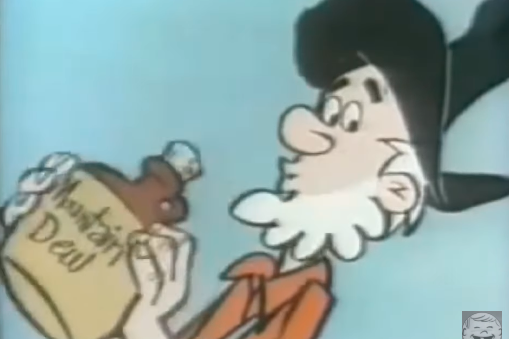
Before Mountain Dew became known for its extreme sports branding, it had an entirely different image in the 1960s and 1970s. The original mascot was a moonshiner named Willy the Hillbilly, who was often accompanied by a mischievous raccoon in promotional materials. The raccoon was a nod to Mountain Dew’s Appalachian roots, and together, Willy and his furry friend represented the soda’s backwoods, down-home charm.
As Mountain Dew rebranded in the 1980s to target a younger, more energetic audience, Willy and his raccoon were retired. The soda shifted to high adrenaline advertising with extreme sports themes, leaving behind its original mascot. Though long forgotten by the mainstream, nostalgic soda fans still remember the hillbilly and his raccoon as a quirky part of Mountain Dew’s history.
10. The Pepsi Wild Cherry Panther
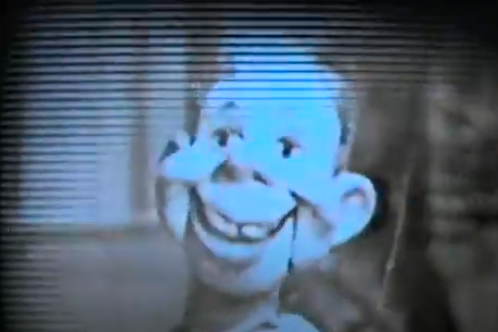
The Pepsi Wild Cherry Panther was an unforgettable mascot that debuted in the early 1990s as part of Pepsi’s campaign for its Wild Cherry flavor. This sleek, mysterious feline was designed to embody the bold and exciting essence of the Wild Cherry soda. The panther, with its deep purple and black fur, exuded an air of sophistication and coolness, a perfect match for the bold, unique taste of Pepsi Wild Cherry. The character was often shown in ads as a suave, almost secretive figure who knew how to enjoy life’s pleasures, which made the panther not just an advertisement mascot but an emblem of confidence and allure. Pepsi used the panther’s persona to connect with a younger, hip audience looking for something more exciting and flavorful than traditional sodas.
The Wild Cherry Panther became popular almost immediately, appearing in various commercials and print ads where it was often seen lounging in a laid-back yet charismatic manner, with a bottle of Wild Cherry Pepsi in paw. The panther’s cool demeanor, paired with Pepsi’s vibrant and fruity soda, captured the essence of a product designed to stand out from the crowd. Despite its success, the panther’s run as Pepsi’s mascot was relatively short-lived, as the company eventually phased out the character. However, the Wild Cherry Panther remains a nostalgic symbol for many who remember the ’90s. Today, the panther continues to represent a bold, confident, and mysterious time in Pepsi’s branding, still evoking memories of a fun, flavor-packed era.
11. Quiky the Bunny (Nesquik’s Forgotten Rival, Quik Bunny)
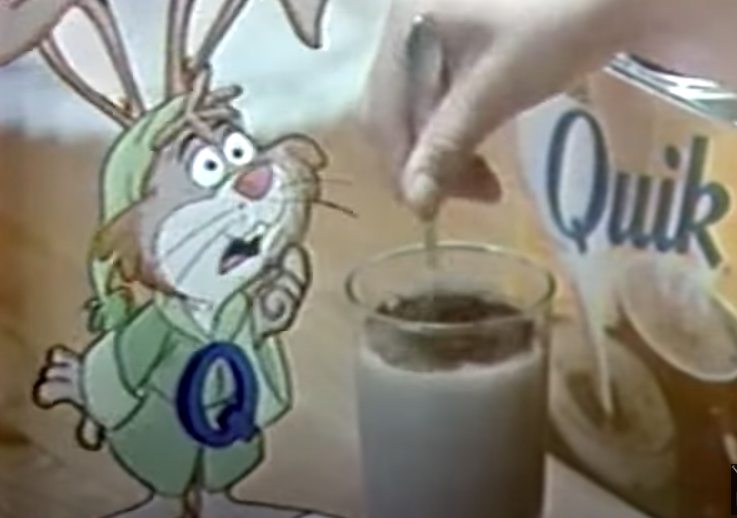
Before Nesquik’s modern rebranding, it was originally known as Nestlé Quik, and it had a mascot named Quiky the Bunny. This energetic, fun-loving rabbit was the face of the brand, appearing in commercials and packaging, always ready to mix up a glass of chocolate milk. Quiky was a direct rival to other chocolate drink mascots like the Yoo-hoo Kangaroo, and he often appeared in ads showing off his speed and enthusiasm for Nesquik.
Over time, Nestlé rebranded the drink as Nesquik, and while Quiky still exists in some marketing, his presence has been significantly reduced. The original, more animated version of the Quik Bunny, with his ‘90s-era cool personality, is long gone. Though Nesquik still sells chocolate milk powder and bottled drinks, its once-beloved rabbit mascot is rarely seen in the same way it was during its peak.
12. Spuds MacKenzie
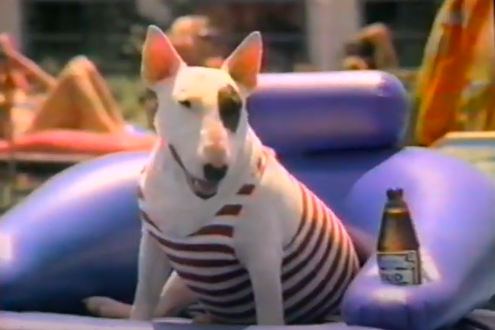
Spuds MacKenzie, Bud Light’s party-loving bull terrier, became an iconic figure in beer advertising when he was introduced in 1987. Known for his playful and mischievous personality, Spuds was depicted as the ultimate party animal, often seen at wild beach parties, cruising in convertibles, and enjoying a cold Bud Light with friends. His relatable, fun-loving persona resonated with audiences, and the dog quickly became a symbol of carefree fun and youthful exuberance. Spuds MacKenzie’s popularity skyrocketed, and he was featured in a series of unforgettable commercials, turning him into a pop culture sensation. He even appeared on T-shirts, posters, and Bud Light promotional materials, solidifying his place as one of the most beloved animal mascots in advertising history.
Despite his massive success, Spuds MacKenzie was phased out in 1991 due to growing concerns about the character’s association with excessive partying and the shift in beer marketing trends. Anheuser-Busch decided to retire the bull terrier in favor of new approaches that aligned better with responsible drinking messages. While his commercial appearances were short-lived, Spuds MacKenzie’s legacy remains strong. He continues to be a nostalgic symbol of the late ’80s and early ’90s, and his impact on beer advertising is still remembered fondly, even though he is no longer part of Bud Light’s marketing campaigns.
13. The Hamm’s Beer Bear
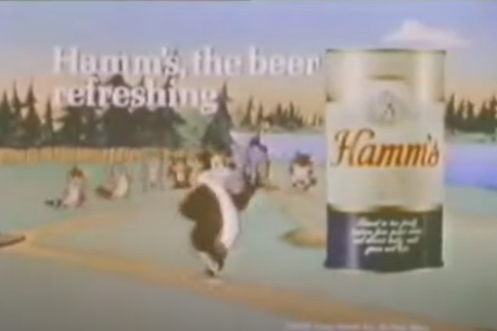
The Hamm’s Beer Bear was a friendly and slightly clumsy cartoon bear who became the face of Hamm’s Beer starting in the 1950s. With his rotund figure, expressive face, and love for beer, he was featured in a series of animated commercials set to the famous jingle, “From the land of sky-blue waters.” His lighthearted antics, which often involved him engaging in outdoor activities like fishing or canoeing, made him an endearing and relatable character for beer drinkers.
Unlike many mascots, the Hamm’s Beer Bear had staying power, appearing in advertisements for several decades. However, as beer marketing evolved and the use of animated characters declined, he eventually faded into history. Still, for those who remember the golden age of beer commercials, he remains one of the most cherished advertising mascots ever created.


